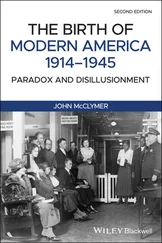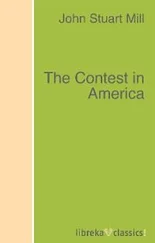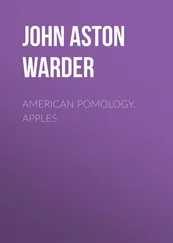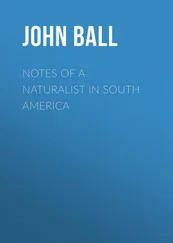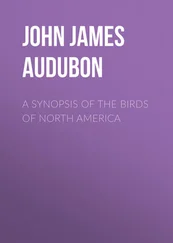At some point in the depths of that night Tim felt something new growing in him. When the dawn came he found the swelling had gone from his hands. The disease was leaving him. But it was not just physical healing that occurred, because for the first time in his life Tim believed that he had experienced something spiritual. He felt that he had been reborn, and he suddenly had hope and confidence. He felt that he could move away from the life that he had led, and embrace whatever new life was about to arrive.
This new life was not long in coming. Tim heard that Professor David McClelland, the director of the Harvard Center for Personality Research, was taking a sabbatical in Florence. Professor McClelland had read Interpersonal Diagnosis and the pair met for lunch. Leary explained his thoughts in The Existential Transaction. They echoed emerging theories from a number of American psychologists, and McClelland recognised that these radical theories seemed to offer a way forward for the field of psychology. Impressed, he offered Leary a job. Tim would be returning to Massachusetts. He was off to Harvard.
CHAPTER 3 But Don’t You Think He’s Just a Little Bit Square?
Timothy Leary arrived at Harvard at the tail end of 1959. It was a good time to draw a line under the past and focus on the future. The 1960s were about to begin.
His new position called for a new outfit, so he visited a Harvard Square tailor and emerged wearing a tweed jacket with leather elbow patches and a button-down shirt. With his greying hair, horn-rimmed glasses and hearing aid, he looked every inch a stereotypical East Coast academic. The only clue to his rebellious instincts were the white tennis shoes that he wore everywhere. He moved into a nearby hotel and enrolled the children in yet another school.
He soon settled into life at the Harvard Center for Personality Research, and his classes made an immediate impact on the students. There was some suspicion among the more conservative members of the faculty about his ideas, but he was undeniably interesting and it was possible that he was on to something important. He made friends quickly and was soon part of a drinking group called the White Hand Drinking Society. Evenings were spent hanging out in Harvard Square bars, discussing work and generally putting the world to rights. The return to Massachusetts also brought him near to his childhood home, so he was able to spend more time rebuilding his relationship with his mother. She was horrified when she discovered that her grandchildren had never once attended mass, but at least Tim’s current position gave her cause for pride.
Tim got into the habit of returning to his small office on Divinity Avenue to read and drink wine late at night, after his children were asleep. In this relaxed atmosphere he began to attract visits from eager and curious graduate students. Tim was always welcoming and willing to give time to their questions and concerns. It was during this time that he met Assistant Professor Richard Alpert, a man also prone to late-night hours. Alpert was 10 years younger than Leary, and was shorter with a fuller build and a round, friendly face. Like Leary, he was ambitious, a trait inherited from his extremely wealthy family. His father was a noted Massachusetts lawyer who had previously been president of the New Haven Railroad, and Richard had grown up in an atmosphere of money and success. He was a warm, fast-talking, eminently likeable psychologist who was a big hit with Tim’s children. When Tim decided to spend the summer vacation in Mexico, Richard agreed to join him. Their respective methods of journeying south said much about their different personalities. Tim was planning to make the journey in an old Ford that he had just bought, a plan that struck those who had seen the car as being both dangerous and extraordinarily optimistic. Richard tackled the journey with a little more style. He bought a small aeroplane and flew himself there.
That holiday took place in a Spanish-style villa at Cuernavaca. It was an idyllic environment, with a long veranda, terrace, swimming pool and a lush green lawn surrounded by ahuehuete trees and colourful flowering vines. Tim’s daughter Susan spent the summer with friends in Berkeley, but Tim and his son Jack were visited by many friends and colleagues, including Professor McClelland, Richard Alpert and an old friend and drinking buddy from graduate school in Berkeley, Frank Barron. Frank had been instrumental in setting up Tim’s meeting with Professor McClelland in Florence, which led to the offer of work at Harvard. Tim had returned the favour by recommending him for a similar position at Harvard soon after he had arrived.
When he visited Tim in Italy in 1959, Frank had been talking enthusiastically about some ‘magic mushrooms’ that he had obtained from a Mexican psychiatrist. Tim’s response to this was fairly standard for a psychologist in the 1950s. He was disconcerted and a little embarrassed when his previously rational friend suddenly began raving about mystical states and visions, and he warned him that he was in danger of losing his scientific credibility if he ‘babbled this way’ publicly. 1
The idea of magic mushrooms had become known to mainstream society only a couple of years earlier, following an article by R. Gordon Wasson in the May 1957 issue of Life magazine. Wasson, an ex-vice-president of J.P. Morgan and Company, the leading investment bank, had the unlikely hobby of ethnomycology, the study of mushrooms in human society. Together with his wife Valentina, he had travelled the world investigating the importance of toadstools in tribal society. He had spent two years in Mexico investigating an intriguing report by anthropologists who, in 1936, witnessed a ‘sacred mushroom’ ceremony in a remote Mexican village. This report seemed to provide evidence that a mushroom cult, believed to date back 4000 years, was still in existence. This cult was centred on the ingestion of a mushroom called teonanacatl , or ‘God’s flesh’. These ceremonies had been driven underground following the arrival of the Catholic Church in Mexico. The cult had been dismissed as myth, and botanists had claimed that these fungi simply didn’t exist.
The Life article, a 17-page feature in the magazine’s ‘Great Adventure’ series, detailed how the Wassons had travelled to the remote highlands of Mexico, where they eventually met a curandera , or medicine woman, from the teonanacatl cult. Being included in a ceremony wasn’t easy, for it was only permitted to enquire about the mushrooms ‘when evening and darkness come and you are alone with a wise old man or woman whose confidence you have won, by the light of a candle held in the hand and talking in a whisper’. The mushrooms themselves had to be picked by virgins before sunrise at the time of the new moon. 2 But eventually the Wassons’ perseverance paid off, and they became the first white people in recorded history to sample God’s flesh. Wasson’s sense of detached scientific observation ‘soon melted before the onslaught of the mushrooms’, he later wrote, and following a night spent on the dirt floor of a remote hut, with his mind flying over incredible landscapes observing wondrous visions, ‘the word “ecstasy” took on real meaning’. 3
The mushrooms grew on a line of volcanic peaks just north of the villa where Tim and his friends spent the days lounging in the sunshine by the pool. A frequent visitor to the villa, Gerhart Braun from the University of Mexico, thought that he could obtain some of these fabled mushrooms. Did Tim want to try them? The stories about the mushrooms were undeniably intriguing, but the idea of taking them was a little frightening. Tim’s life had turned a corner and seemed to be on the right track, and there was no reason to jeopardise what he now had with the risk of madness. Yet there was also a professional curiosity involved. Frank had claimed that these strange fungi might play a role in their search for meaningful behaviour change, and this fitted with Leary’s suspicion that the ‘transactional element’ between doctor and patient that he had been searching for might only be possible with a chemical key—a drug.
Читать дальше




